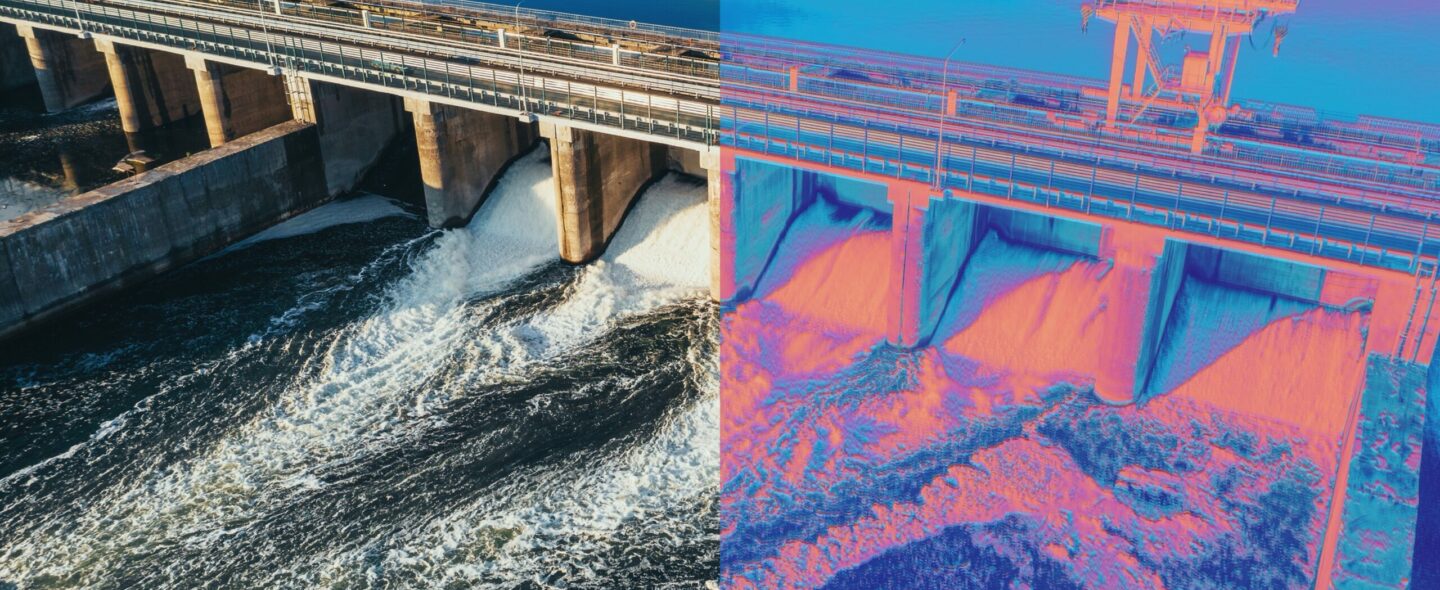Digital twin of Xiaolangdi Water Conservancy Project (©️ Yellow River Engineering Consulting Co., Ltd)

China is promoting the adoption of digital twins technology for water governance and conservancy.
Digital twins serve as real-time digital representations of water bodies and water management infrastructure.
This approach can assist in resilience planning and help mitigate the impact of global climate change.
Water’s governance has been seen as a critical national issue in China since ancient times. The Chinese civilization emerged from the Yellow and Yangtze riverbanks, which are fed by glacial meltwater from the Qinghai-Tibetan Plateau. Still, despite being home to 21% of the world’s population, China possesses only 6% of the world’s freshwater resources. [1] Lately, experts started to deploy digital twin technology as a new way to manage this situation.
Rapid urbanization has driven up water demands, while climate change and pollution have contributed to further water scarcity. Flood control, in which inadequate planning can lead to significant loss of life and damage to property, is also a perpetual concern. This is seen in the openly protested decision to divert floodwaters from Beijing’s urban centers to Zhuozhou’s rural areas during the 2023 China floods. [2] To tackle these challenges, China has made significant investments in its water infrastructure, including implementing digital twins to better manage the complexities and uncertainties around water resources planning.
Digital twins are virtual simulations of real-world processes, operations, or products that can be used to run digital simulations. The concept was originally pioneered by NASA in the 1960s to produce a “living model” of Apollo 13, which allowed engineers to simulate and evaluate rescue solutions from ground level [3].
This concept is now seeing increasingly widespread adoption in industries and sectors such as manufacturing, construction, energy, logistics and healthcare. Recent advancements in the Internet of Things (IoT), Artificial Intelligence (AI) and Cloud Computing, have made the concept more cost-effective than previously.
Digital twins serve as digital representations of water systems and water resources management infrastructure. They provide evolving pictures of water conditions, informed by real-time data integrated from various sensors, meters and IoT devices. Water resources management authorities can use these models to carry out scenario planning and make data-led strategic decisions, without having to resort to physical tests. Digital twins can help authorities anticipate potential problems and be more agile and resilient in their responses.[4]
In 2022, China’s Ministry of Water Resources announced plans for a comprehensive digital twin system for water resources management. 94 pilot digital twin programs have been established in 48 locations across the country. [5] A digital national water conservation map, dynamically updated online, was released to optimize flood control, drought relief and water resource management. As of now, it continuously integrates data from 16 million water resources management projects such as reservoirs and river dikes.[6]
River basins and water networks are targeted priorities for digital twin watershed applications. Now, all of China’s 5,186 small and medium-sized rivers with flood risks are hydrologically monitored. Real-time monitoring data are collected from 53,000 precipitation stations and 25,000 hydrological stations, as well as from a series of meteorological satellites and weather radars. The Ministry of Water Resources seeks to systematically digitalize key elements of river basins to enable real-time simulations by 2025.[7]
The Xiaolangdi Water Conservancy Project, located in the middle reaches of the Yellow River, is a flagship pilot project in a digital twin dam for watershed management. Its main objective is to help with forecasting, early warning, rehearsal, and planning.[8]
In last June, a simulated flood control drill was conducted at the Xiaolangdi Dam. The simulation used historical data from the 2021 Yellow River autumn flooding and amplified its magnitude by 10% to produce a scenario with an unprecedented water level of 274 meters. It was able to generate key data and countermeasure proposals for the on-site personnel to make timely decisions. [9]
Digital twin of Xiaolangdi Water Conservancy Project (©️ Yellow River Engineering Consulting Co., Ltd)
While Switzerland is considered water-rich, it is vulnerable to floods and relies on efficient water allocation for its agriculture sector. Some of Europe’s major rivers, such as the Rhine, Rhône and Inn, have headwaters in the alpine nation. [10] Therefore, water management and conservancy is also a topic of paramount importance to Switzerland, where climate change is altering the seasonal distribution of water from precipitation. Moreover, hydropower generates nearly 62% of Switzerland’s electricity. This production could come under mounting pressure as the seasonal runoff pattern becomes increasingly unpredictable. [11] Meanwhile, digital twin technology is being actively developed and applied in related sectors. EPFL/MIT spin-off Akselos dlivers cutting-edge digital twinning of energy infrastructure [12] and the climatetech startup Wegaw combines satellite data processing with AI for energy production optimization. [13]
Nevertheless, although Switzerland stands to gain from the implementation of digital twins for water management, there are numerous potential challenges. Digital twins rely on consistent, accurate and interoperable data for modeling and simulation, which may be difficult to integrate across Switzerland’s decentralized system. Combining secure data-sharing protocols across existing infrastructure, such as dams, weather stations, and satellites, into a single cohesive digital twin framework will also be complex.
Additionally, such a resource-intensive project may not be able to garner sufficient traction within Switzerland, though perhaps a transboundary initiative could be established in cooperation with neighboring countries. These questions would need to be addressed before the full potential of digital twins can be unlocked.
[1] https://earth.org/tackling-chinas-water-shortage-crisis/
[4] https://www.chinadaily.com.cn/a/202306/21/WS64924d1fa310bf8a75d6b0d6.html
[5] http://english.scio.gov.cn/m/pressroom/2023-09/25/content_116708397.htm
[6] https://cn.chinadaily.com.cn/a/202306/21/WS64926276a310ba94c5612d83.html
[7] https://www.chinadaily.com.cn/a/202306/21/WS64924d1fa310bf8a75d6b0d6.html
[8] http://www.news.cn/2023-06/20/c_1129709105.htm
[9] https://www.sohu.com/a/696140996_121123815
[10] https://www.eda.admin.ch/aboutswitzerland/en/home/umwelt/geografie/seen-und-fluesse.html
[12] https://www.weforum.org/organizations/akselos-sa
[13] https://wegaw.com/

